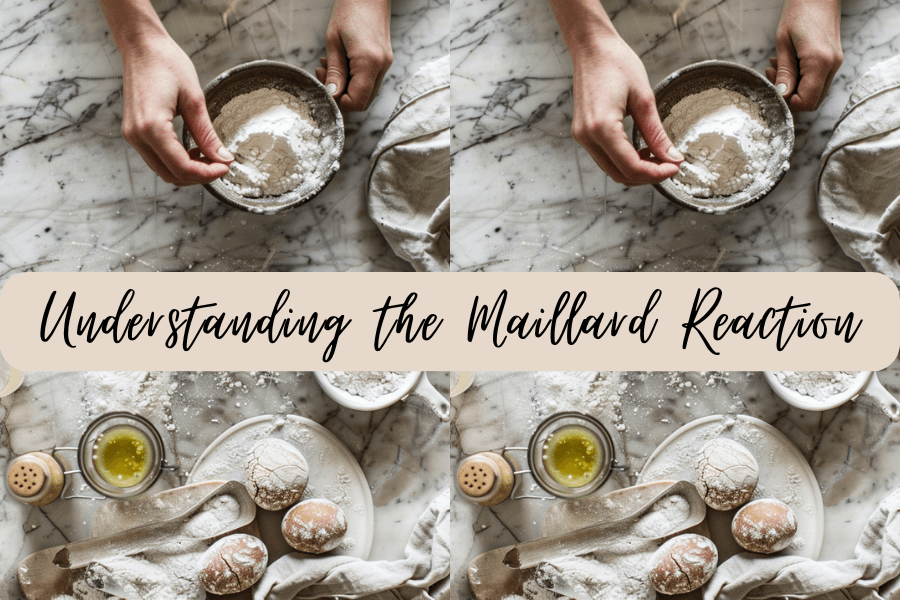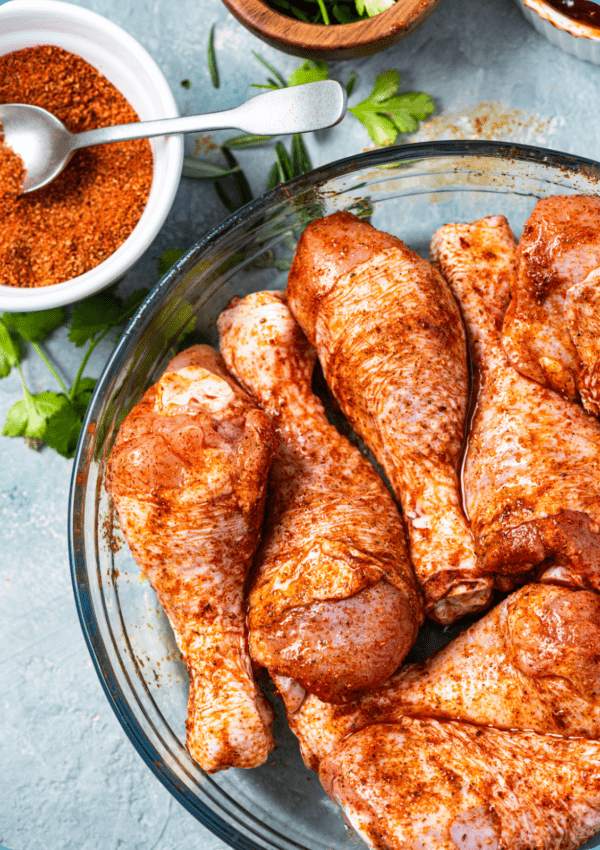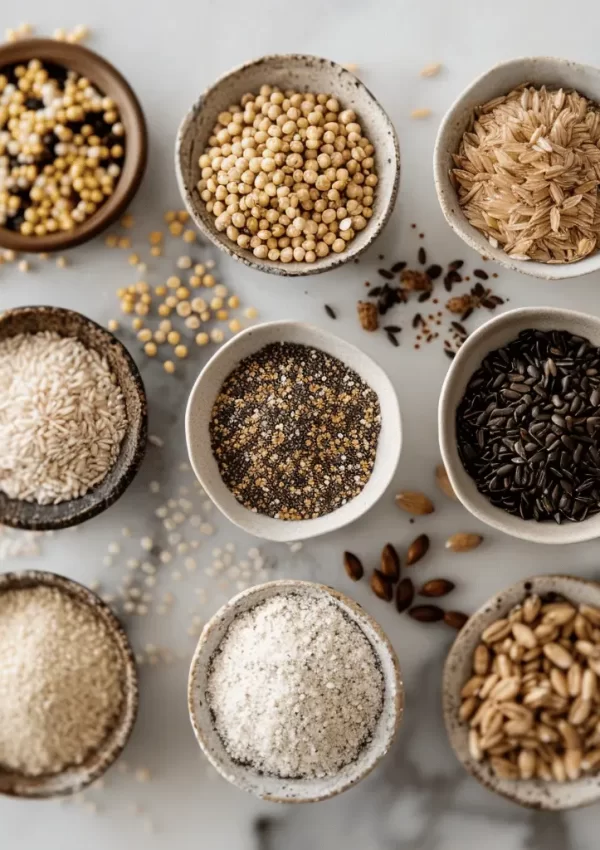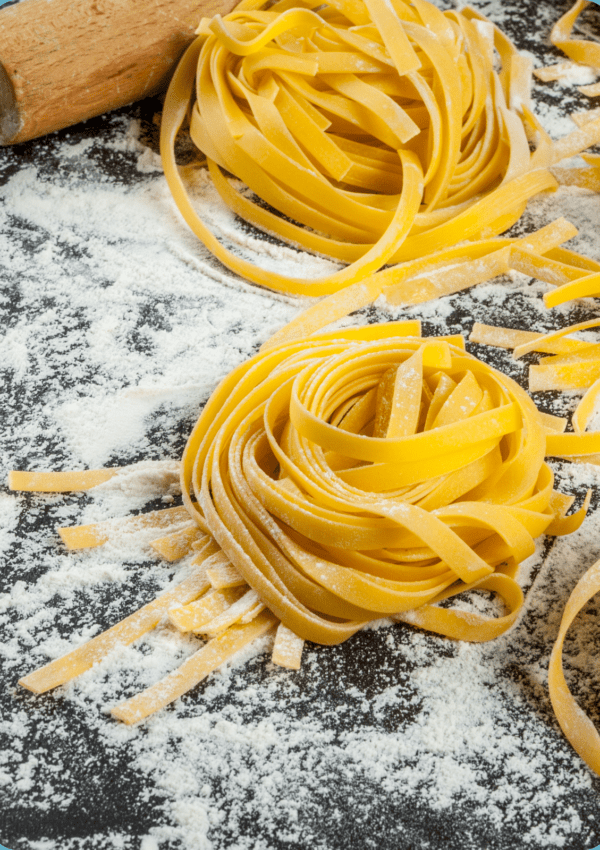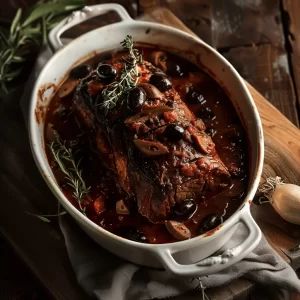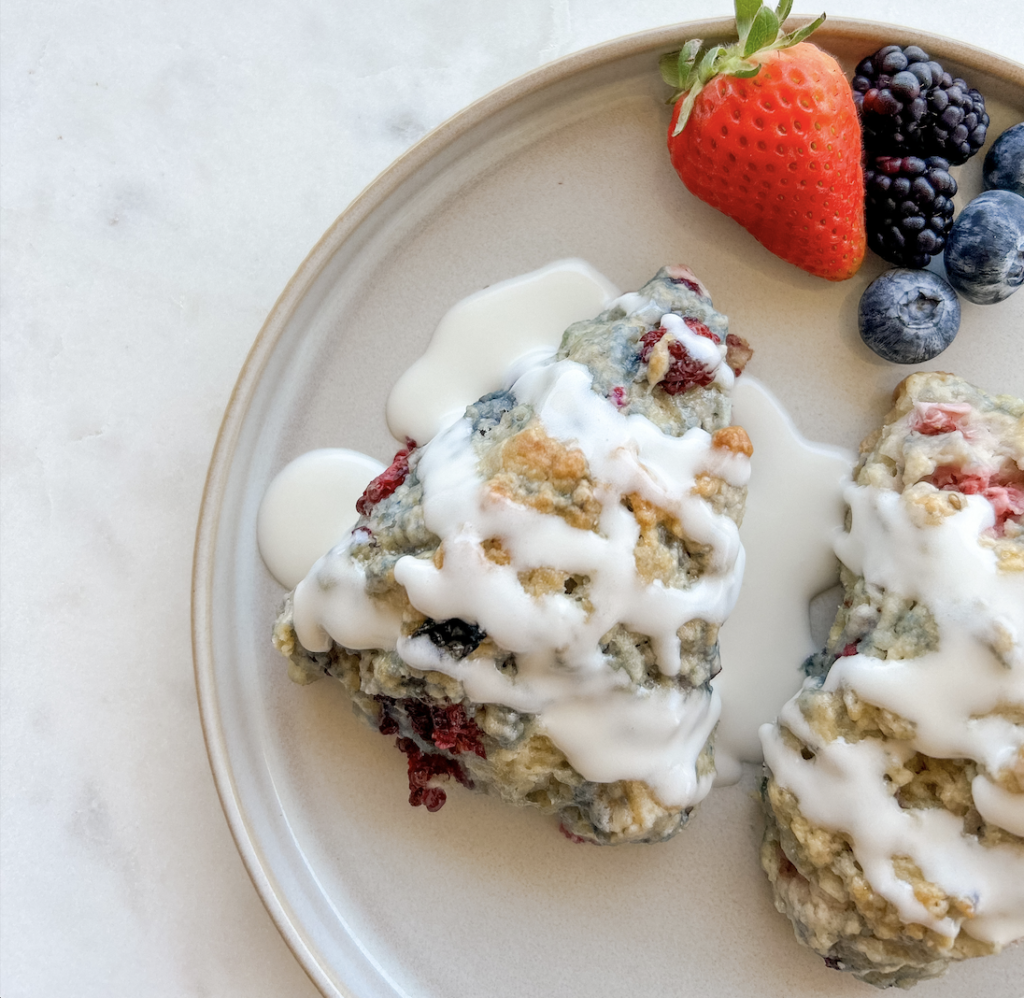One of our missions here at The Spice Girl Kitchen is to increase your confidence in the kitchen, help you level up your cooking, and master the fundamentals. That’s exactly why we include these ‘Kitchen Tips’ blogs. In the ‘Kitchen Tips’ category, the aim is to teach you how to fish. Where the recipes are sort of like handing you the basket of fish. Don’t get me wrong, I LOVE handing out baskets of fish. But if you have an interest in really understanding how to cook without a recipe, then these ‘Kitchen Tips’ blogs will help you get there!
Ever wondered why that perfectly seared steak smells so irresistible or why toast gets that golden brown hue? Welcome to the magic of the Maillard reaction! This week in our ‘Kitchen Tips’ series, we’re diving into this fascinating chemical process that’s a game-changer for your culinary creations. Get ready to level up your cooking skills with an informative guide to understanding and mastering the Maillard reaction!
What is the Maillard Reaction?
First things first: what exactly is the Maillard reaction? Named after French chemist Louis-Camille Maillard, who discovered it in 1912, this reaction is a chemical process that occurs when amino acids (the building blocks of proteins) and reducing sugars (a type of carbohydrate) interact under heat. The result? A complex web of flavors, aromas, and colors that make our food delicious and visually appealing.
You experience the Maillard reaction every day, even if you don’t realize it. Think about the crispy edges on your roast chicken, the dark crust on a loaf of bread, or the rich brown color of your morning coffee. All these mouthwatering traits are thanks to the Maillard reaction.
Did You Know? The Maillard reaction was first discovered in 1912 by Louis-Camille Maillard, but it wasn’t until the 1950s that its significance in cooking was fully understood.
Why is the Maillard Reaction Important?
Now that we know what it is, let’s talk about why it’s such a big deal in the kitchen.
Flavor Development
The Maillard reaction is like a flavor explosion. When proteins and sugars break down and recombine under heat, they form hundreds of new flavor compounds. This is why a grilled steak tastes so much better than a boiled one. The Maillard reaction creates that savory, umami-rich taste that makes your taste buds dance.
Did You Know? The Maillard reaction doesn’t just happen in your kitchen. It’s also a key process in the production of beer, chocolate, and even pet food!
Aromas
Ever walked into a kitchen and instantly felt hungry because of the mouthwatering aroma? That’s the Maillard reaction at work. The same chemical process that enhances flavor also produces enticing aromas, making food smell as good as it tastes.
Visual Appeal
We eat with our eyes first, and the Maillard reaction helps make food look delicious. The golden brown crust on a roast or the deep, caramelized color on sautéed onions signals to our brain that something tasty is about to be enjoyed.
[the_ad id=”3378″]
How Does the Maillard Reaction Work?
Basic Chemistry
The Maillard reaction occurs when amino acids and reducing sugars interact under heat. This reaction produces a wide range of compounds, including melanoidins, which are responsible for the brown color and complex flavors.
Did You Know? There are hundreds of different compounds created during the Maillard reaction, each contributing to the complex flavors and aromas we love.
Conditions Needed
For the Maillard reaction to occur, you need three key conditions: heat, a dry environment, and time. The reaction typically starts at temperatures above 285°F (140°C). A dry cooking surface helps by concentrating the proteins and sugars, making the reaction more efficient. Patience is also essential; the longer the reaction is allowed to proceed, the more complex the flavors.
[the_ad id=”3378″]
Tips for Mastering the Maillard Reaction
Perfect Searing
To achieve a perfect sear on meat, start by patting it dry with paper towels. Moisture is the enemy of browning, so you want the surface as dry as possible. Heat your pan over high heat until it’s screaming hot, then add a high smoke point oil like canola or avocado oil (I prefer avocado oil!). Place your meat in the pan without overcrowding it (give those steaks some room to breathe!), and resist the urge to move them around. Let them sear undisturbed until a deep brown crust forms.
Baking to Perfection
When baking, aim for a consistent temperature to ensure even browning. Preheat your oven properly and use a thermometer if needed. Brushing bread or pastries with egg wash can enhance browning due to the proteins in the egg.
Toast with the Most
For perfectly toasted bread, use a toaster or oven in a medium setting. The goal is to achieve a golden brown color without burning. The sugars and proteins in the bread will react to create that delicious, toasty flavor.
[the_ad id=”3378″]
Food Science Spotlight
Maillard vs. Caramelization
While both processes involve browning and flavor development, they are different. Caramelization occurs when sugars alone are heated, creating a sweet, nutty flavor (think caramel or roasted vegetables). The Maillard reaction, on the other hand, requires both proteins and sugars and produces more complex, savory flavors.
Temperature Control
Temperature is crucial for the Maillard reaction. Too low, and the reaction won’t occur; too high, and you risk burning the food before it can brown properly. This is why managing your heat is so important, whether you’re searing, roasting, or baking.
Not Just for Meat
While the Maillard reaction is often associated with meat, it’s also important for vegetables, grains, and even coffee. Roasting vegetables at high heat can create deep, sweet-savory flavors. Toasting grains before cooking can add a layer of complexity to your dishes. And let’s not forget the rich, complex flavors developed during coffee roasting.
[the_ad id=”3378″]
Common Mistakes and How to Avoid Them
Overcrowding the Pan
When you crowd your pan, the moisture released by the food can’t evaporate quickly enough, leading to steaming instead of searing. This prevents the Maillard reaction from occurring properly. Give your food some space, or cook in batches if necessary.
Too Much Moisture
Excess moisture can prevent browning. Whether you’re searing meat or roasting vegetables, make sure they are dry before cooking. Use paper towels to blot away excess moisture.
Patience is Key
Browning takes time, so don’t rush it. Allow your food to cook undisturbed until a deep brown crust forms. This patience will be rewarded with more flavor and better texture.
[the_ad id=”3378″]
You May Also Like
If you like these tips, you may also be interested in:
- Tips For Making Perfectly Cooked Grains
- A Comprehensive Guide To Cooking With Aromatics
- How To Cook Perfectly Al Dente Pasta Everytime
The Maillard reaction is a culinary marvel that transforms simple ingredients into flavorful, aromatic, and visually appealing dishes. By understanding and mastering this reaction, you can elevate your cooking and impress your friends and family with your newfound skills. So next time you’re in the kitchen, think about the magic happening at a molecular level and enjoy the delicious results.
This post was all about the Maillard Reaction!
Ready to level up your cooking game? Try out these tips and let us know how it goes! Make sure to tag me @thespicegirlkitchen_ on Instagram or @thespicegirlkitchen on TikTok!

